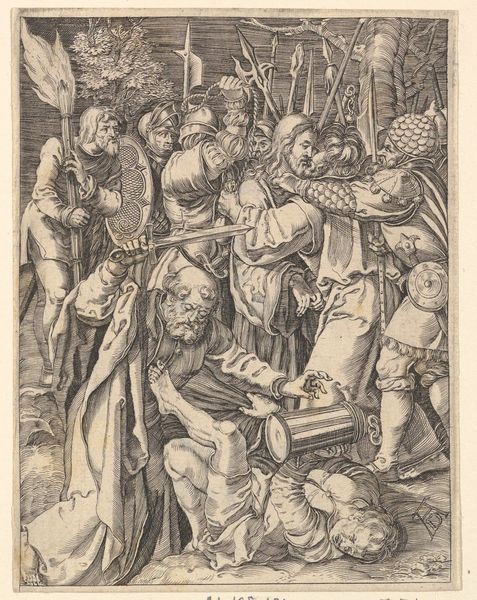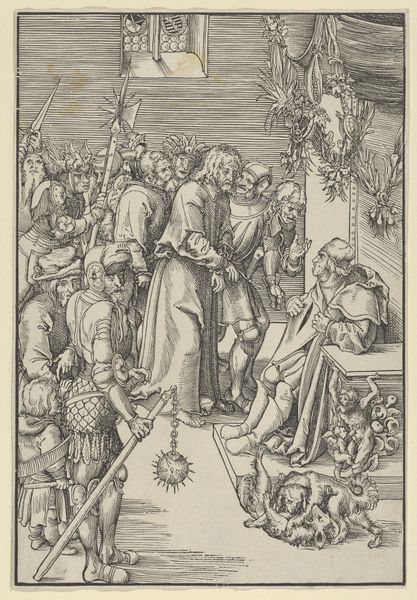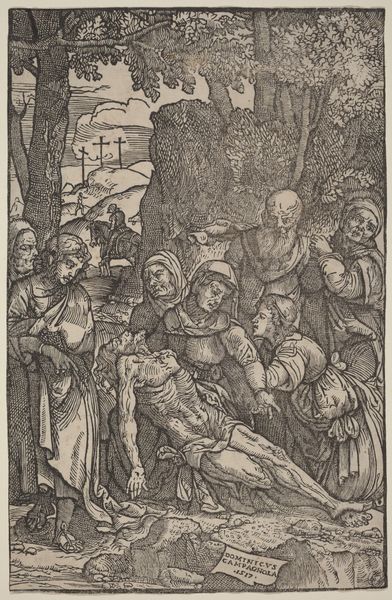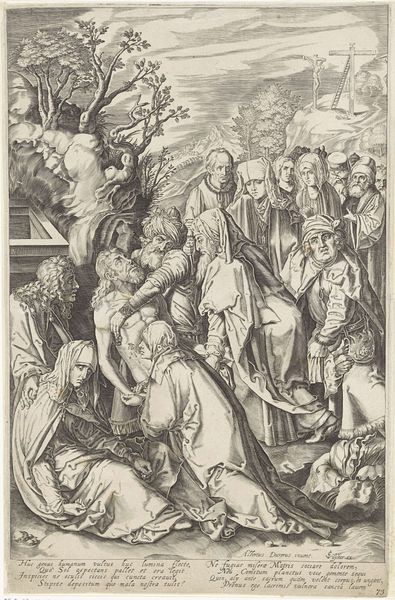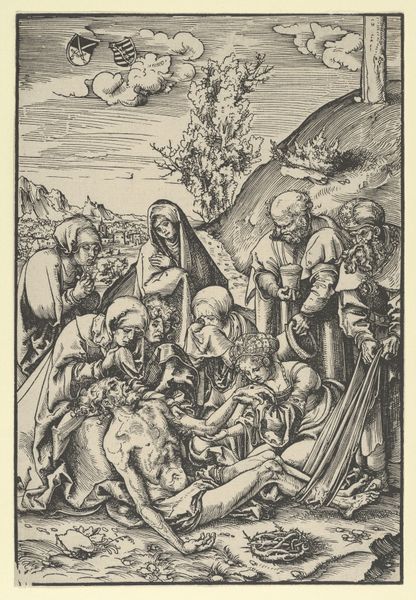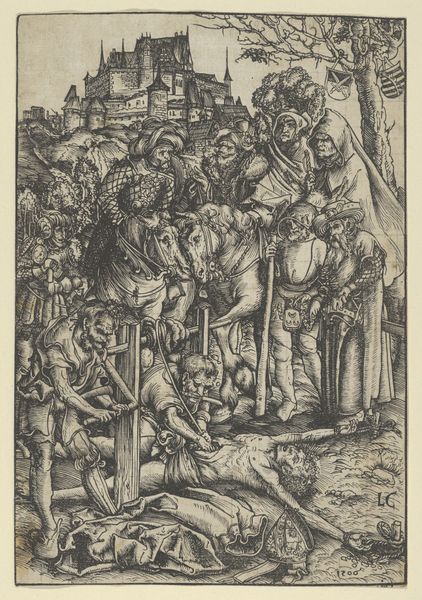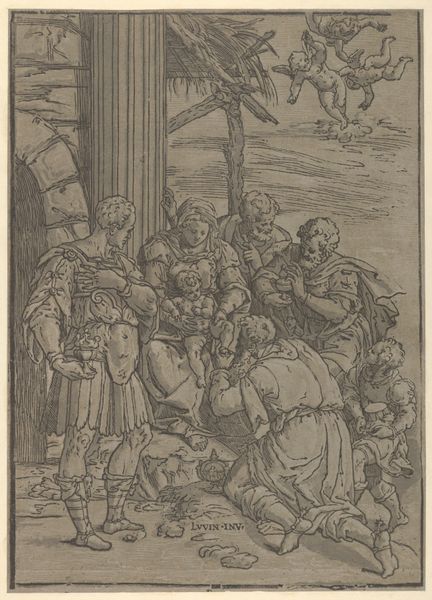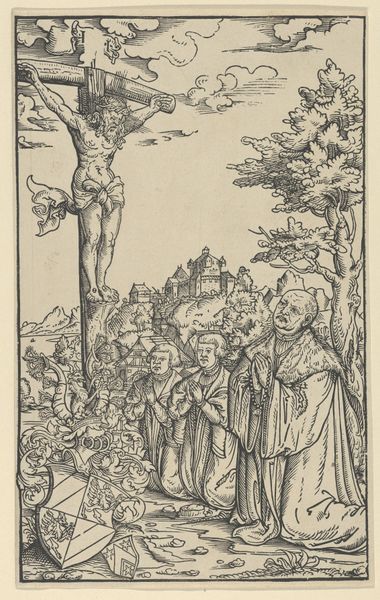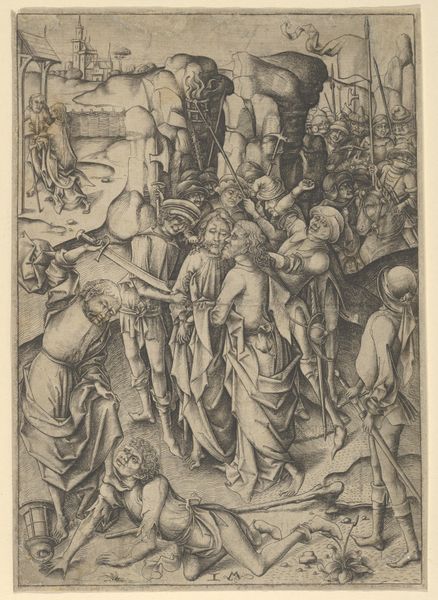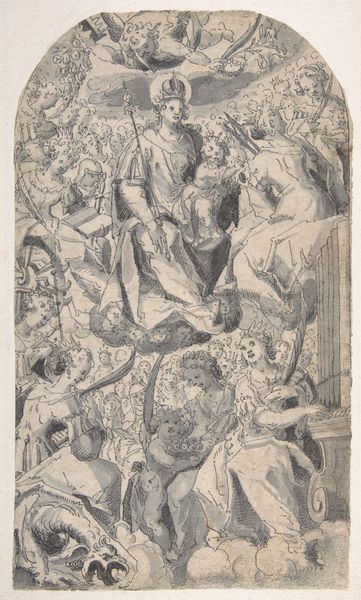
drawing, ink, pen
#
drawing
#
narrative-art
#
pen drawing
#
pen illustration
#
pen sketch
#
11_renaissance
#
ink
#
pen
#
northern-renaissance
Dimensions: height 256 mm, width 178 mm
Copyright: Rijks Museum: Open Domain
Curator: Looking at this drawing, "Samuel Offering a Suckling Lamb to Yahweh," dating from 1540-1550 and attributed to Dirck Pietersz. Crabeth, presently housed in the Rijksmuseum, I'm immediately struck by its graphic power. What do you see? Editor: My eyes are drawn to the detailed labor. All those pen strokes painstakingly building this scene! The layering of the ink, the way he captures the texture of fabric. It's craft elevated. Curator: Absolutely. Crabeth, a key figure in the Northern Renaissance, clearly uses the pen and ink medium here to tap into the broader social role of religious imagery. This scene from the Old Testament—Samuel's sacrifice—is depicted with a certain... didactic intention. Editor: Didactic, yes, but consider the physicality of sacrifice. That lamb, presumably raised, cared for, now offered. It’s labor and life distilled into ritual. And the tools of the trade—the vessels, the altar, what are those made from? Whose hands shaped them? Curator: A powerful point. The very act of depicting such a moment also highlights artistic labour within a complex system of patronage. Drawings such as these were not simply artistic expressions; they had a function in reinforcing social order and faith. This narrative had to resonate with patrons, often religious orders or wealthy families. Editor: Right, but it’s about access to resources, too. High-quality ink, paper – these materials dictate the form it can take and who can afford to produce or possess it. Was this meant as a preliminary sketch for something grander or valuable, perhaps stained glass? Curator: Possibly, his work in stained glass is extremely well regarded. Ultimately, how art functions within society informs its creation and reception. This piece offered a narrative steeped in religious, political, and social understanding, reflecting and shaping the values of its time. Editor: Yes. This rendering connects material and meaning, prompting us to see that the act of offering, in art or sacrifice, is so deeply embedded in human endeavour. Curator: It really is striking how layers of historical context, from the artistic materials to the patrons' motivations, become fused. Editor: Indeed. And even beyond intention, understanding the means illuminates the message.
Comments
No comments
Be the first to comment and join the conversation on the ultimate creative platform.
